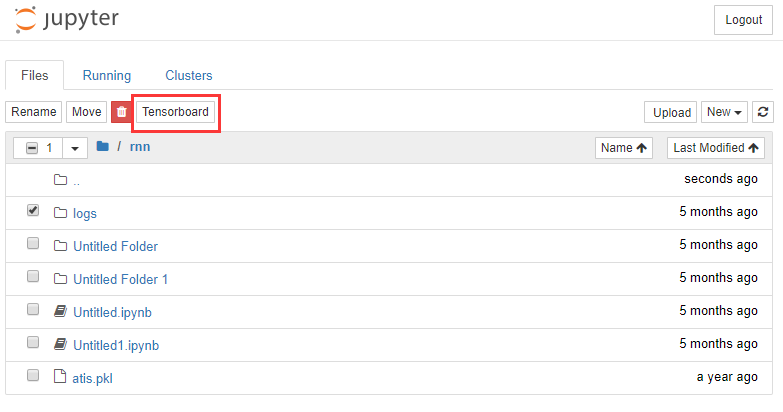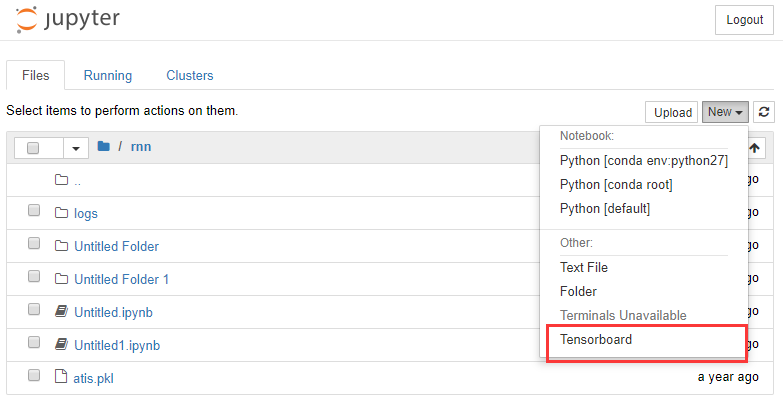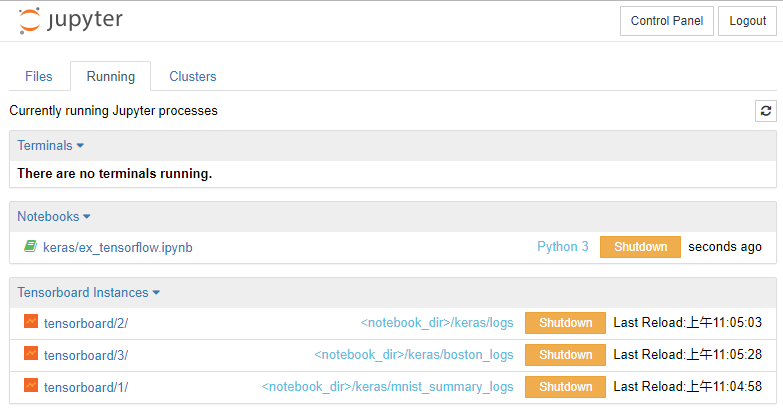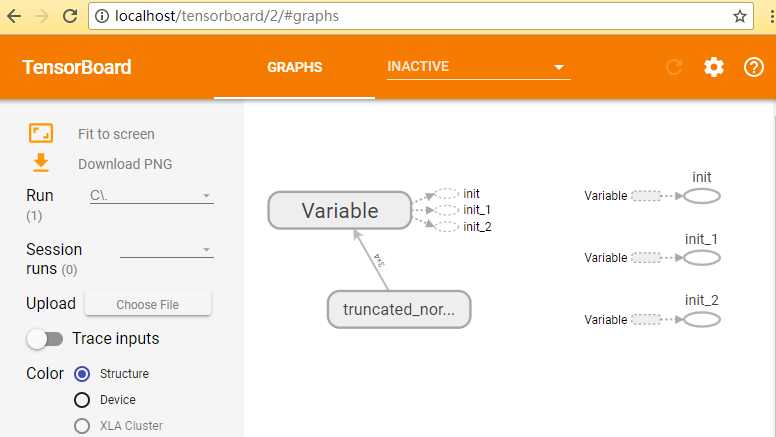Start tensorboard in Jupyter! Jupyter notebook integration for tensorboard
Project description
Tensorboard Integration for Jupyter Notebook.
A jupyter server extension for jupyter notebook and tensorboard (a visualization tool for tensorflow) which provides graphical user interface for tensorboard start, manage and stop in jupyter interface.
Installation
Install the pip package. This should be as simple as
pip install jupyter_tensorboard
Enabling the notebook server to load the server extension. A jupyter subcommand is provided for this. You can enable the serverextension and the configurator nbextensions listed below for the current user with
jupyter tensorboard enable --user
The command accepts the same flags as the jupyter serverextension command provided by notebook versions >= 5.0, including --system to enable in system-wide config (the default), or --sys-prefix to enable in config files inside python’s sys.prefix, such as for a virtual environment. The provided jupyter tensorboard command can also be used to disable.
Once installed, you’ll need to restart the notebook server. Once restarted, you should be able to find the tensorboard user interfaces as described below.
Usage
Once jupyter_tensorboard is installed and enabled, and your notebook server has been restarted, you should be able to find the interfaces to manage tensorboard instances.
In notebook tree view, select a directory, a tensorboard button will be presented. Click the button, a new browser tab will be opened to show the tensorboard interface with the proposed directory as logdir.

In notebook tree view, click the tensorbaord menu in new and a new tensorbaord instance is started with current directory as logdir.

In notebook running tab, a list of tensorboard instances are showed. Managing operations such as browsing, navigating, shutdown can be found here.

The tensorbaord instance interface is in http://jupyter-host/tensorboard/<name>/ with the instance names increasing from 1.

Troubleshooting
If you encounter problems with this server extension, you can:
check the issue page for this repository. If you can’t find one that fits your problem, please create a new one!
For debugging, useful information can (sometimes) be found by:
Checking for error messages in the browser’s Javascript console.
Checking for messages in the notebook server’s logs. This is particularly useful when the server is run with the –debug flag, to get as many logs as possible.
Project details
Release history Release notifications | RSS feed
Download files
Download the file for your platform. If you're not sure which to choose, learn more about installing packages.
Source Distribution
Built Distribution
Hashes for jupyter_tensorboard-0.1-py2.py3-none-any.whl
| Algorithm | Hash digest | |
|---|---|---|
| SHA256 | 770e52d7cb06eb9f6b05cfe576642738ab59771d020a5a693be27ac085427e96 |
|
| MD5 | bc3e2385227c85479442836f1f9e5eeb |
|
| BLAKE2b-256 | ccb5ec2c0bcd1e7e8357618a0a33b97eab5c16df85d57951327134cf0343be40 |











